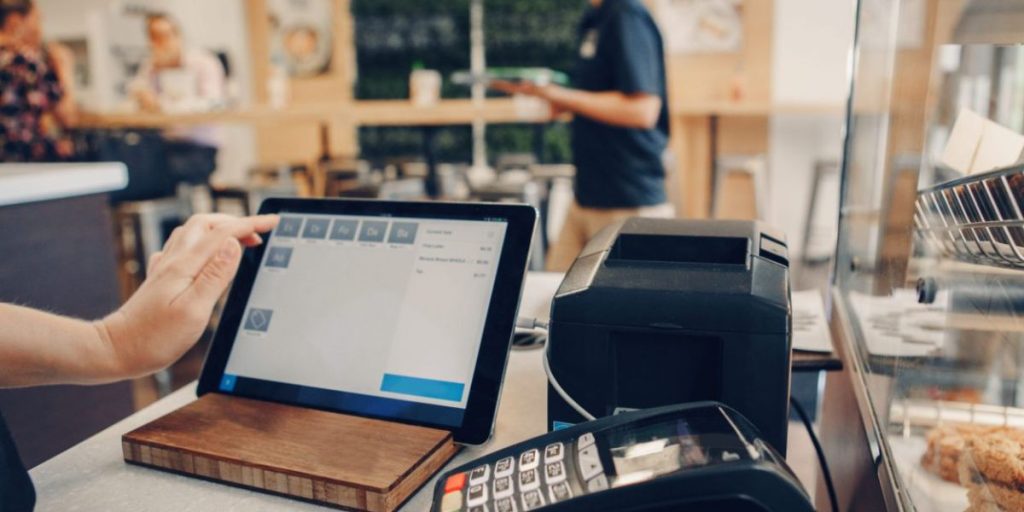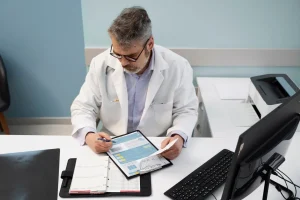Medical billing accuracy depends heavily on using the correct place of service codes, and POS 22 in medical billing represents one of the most frequently used codes in healthcare today. As healthcare providers navigate the complex landscape of insurance claims and reimbursement, understanding what is POS 22 in medical billing becomes crucial for ensuring proper payment and avoiding claim denials.
Place of service 22 description refers to on-campus outpatient hospital services, a critical distinction that affects how claims are processed and reimbursed. This comprehensive guide will explore the intricacies of POS 22, compare it with other common codes like POS 11, and provide healthcare professionals with the knowledge needed to implement accurate billing practices.
Whether you’re a billing specialist, healthcare administrator, or medical provider, mastering the use of place of service 22 in medical billing will significantly impact your practice’s financial health and compliance with insurance requirements.
What is POS 22 in Medical Billing?
POS 22 is a two-digit place of service code that specifically identifies on-campus outpatient hospital services. This code is used when medical services are provided in a portion of a hospital’s main campus that provides diagnostic, therapeutic, and rehabilitation services to sick or injured persons who do not require hospitalization or institutionalization.
The place of service 22 description encompasses various outpatient services within the hospital setting, making it essential for accurate claim submission. Healthcare providers must understand that POS 22 comes into play when services are delivered in hospital outpatient departments, emergency rooms (for outpatient visits), and other on-campus hospital facilities where patients receive care without being admitted.
Key characteristics of POS 22 include:
• Services provided on the main hospital campus
• Outpatient care delivery (non-inpatient services)
• Diagnostic and therapeutic procedures • Emergency department visits for outpatient treatment
• Surgical and nonsurgical services to patients not requiring admission
• Laboratory and radiology services performed in hospital settings
Understanding the correct application of POS 22 is vital for billing teams as it directly impacts reimbursement rates. Insurance companies often have different payment structures for facility versus non-facility services, making the accurate use of pos code 22 crucial for maximizing revenue and ensuring compliance with billing regulations.
Related Guide: POS 21 in Medical Billing
POS 11 vs POS 22: Key Differences in Medical Billing
The distinction between pos 11 in medical billing and pos 22 in medical billing represents one of the most important concepts in healthcare billing. While both codes relate to medical office settings, their applications differ significantly, affecting reimbursement and claim processing.
POS 11 refers to medical services provided in a physician’s office, which is a location other than a hospital, skilled nursing facility, military treatment facility, or other healthcare institution. This code applies to private practice settings, independent medical offices, and clinic environments that are not hospital-affiliated.
The fundamental differences between pos 11 and pos 22 include:
- Location Type: POS 11 represents independent medical offices, while POS 22 designates hospital outpatient departments
- Reimbursement Rates: Insurance companies typically pay different rates for facility (POS 22) versus non-facility (POS 11) services
- Overhead Considerations: Hospital-based services (POS 22) often receive higher reimbursement due to facility overhead costs
- Regulatory Requirements: Different compliance standards may apply depending on the place of service designation
Healthcare providers must carefully evaluate the actual location where services are provided to determine the correct pos code. Using pos 11 vs pos 22 incorrectly can result in claim denials, payment delays, or compliance issues with payers.
Related Guide: POS 11 in Medical Billing
Complete POS 22 Description and Guidelines
The comprehensive place of service 22 description encompasses a wide range of outpatient hospital services that require specific documentation and billing procedures. Healthcare organizations must maintain clear policies regarding when to use pos 22 to ensure consistent application across all departments and service lines.
POS 22 applies to services provided in the outpatient department of a hospital, including various specialized areas within the hospital campus. This designation covers emergency department visits where patients are treated and released, same-day surgery procedures, diagnostic imaging services, laboratory tests, and therapeutic treatments that don’t require inpatient admission.
Essential elements for proper POS 22 utilization include:
- Physical Location Verification: Services must occur on the hospital’s main campus or approved off-campus departments
- Service Type Classification: Only outpatient services qualify for POS 22 designation
- Documentation Requirements: Proper medical records must support the outpatient nature of care
- Billing System Integration: Electronic health records and billing software must accurately capture POS information
- Staff Training: All billing personnel must understand when and how to apply POS 22
The correct pos code ensures appropriate reimbursement and helps maintain compliance with insurance requirements. Healthcare facilities should regularly audit their use of pos 22 to identify potential errors and implement corrective measures when necessary.
When to Use POS 22 in Medical Billing
Determining when pos 22 is used requires understanding the specific circumstances that qualify for this place of service designation. Healthcare providers must evaluate both the location and nature of services to make accurate coding decisions that support proper claim submission and reimbursement.
POS 22 should be utilized when services are provided in hospital outpatient settings, including emergency departments for non-admitted patients, same-day surgery centers within hospitals, diagnostic imaging departments, clinical laboratories, and specialized outpatient clinics operating under hospital licenses.
Appropriate scenarios for using pos 22 include:
- Emergency Department Visits: When patients receive treatment and are discharged the same day
- Outpatient Surgery: Procedures performed in hospital operating rooms without admission
- Diagnostic Services: Radiology, cardiology, and other diagnostic tests in hospital departments
- Therapeutic Treatments: Physical therapy, occupational therapy, and other rehabilitation services
- Laboratory Services: Blood work and specimen analysis in hospital-based labs
- Specialty Consultations: Visits with specialists in hospital-based clinics
Healthcare organizations should establish clear protocols for pos code selection to ensure consistency across departments. Regular training sessions and billing system updates help maintain accuracy in place of service code application, reducing claim denials and improving revenue cycle management.
POS Code Comparison: 11, 19, 21, 22, and Beyond
Understanding the broader context of place of service codes helps healthcare providers make informed decisions about pos 22 in medical billing. Each code represents specific care settings with unique billing requirements and reimbursement implications.
The comparison between commonly used pos codes reveals important distinctions that affect claim processing and payment rates. Healthcare organizations must understand these differences to optimize their revenue cycle and ensure compliance with payer requirements.
| POS Code | Description | Setting Type | Typical Use Cases |
|---|---|---|---|
| POS 11 | Office | Non-facility | Private practice visits, routine consultations |
| POS 19 | Off-campus Outpatient Hospital | Facility | Hospital-owned clinics off main campus |
| POS 21 | Inpatient Hospital | Facility | Admitted patient services, overnight stays |
| POS 22 | On-campus Outpatient Hospital | Facility | Emergency visits, same-day procedures |
| POS 23 | Emergency Room – Hospital | Facility | Emergency department services |
| POS 24 | Ambulatory Surgical Center | Facility | Same-day surgical procedures |
The difference between these codes significantly impacts reimbursement, with facility codes typically receiving higher payment rates due to overhead costs. Healthcare providers must carefully evaluate service locations and circumstances to select the correct pos code for each encounter.
Impact of POS 22 on Medical Billing and Reimbursement
The financial implications of correctly using pos 22 in medical billing extend far beyond simple code selection. Healthcare organizations must understand how place of service designations affect their overall revenue cycle and reimbursement patterns to optimize financial performance.
Insurance companies apply different fee schedules for facility versus non-facility services, making the accurate use of pos code 22 crucial for maximizing reimbursement. Hospital-based services typically receive higher payment rates to account for facility overhead costs, regulatory compliance expenses, and enhanced service capabilities.
Key financial impacts of POS 22 include:
- Higher Reimbursement Rates: Facility-based services often receive premium payments compared to office-based care
- Claim Processing Efficiency: Correct coding reduces denials and accelerates payment processing
- Compliance Benefits: Proper pos code usage minimizes audit risks and regulatory penalties
Revenue Optimization: Accurate billing practices maximize legitimate reimbursement opportunities - Cost Management: Reduced claim rework and appeals lower administrative expenses
Healthcare organizations should analyze their pos code utilization patterns to identify opportunities for revenue enhancement while maintaining ethical billing practices. Regular audits and staff training programs help ensure consistent application of pos 22 and other place of service codes.
Common Billing Errors with POS 22 and How to Avoid Them
Healthcare providers frequently encounter challenges when implementing pos 22 in medical billing, leading to claim denials, payment delays, and compliance issues. Understanding these common pitfalls helps organizations develop effective strategies for accurate place of service code application.
Billing errors related to pos code 22 often stem from misunderstanding the specific requirements for hospital outpatient services or failing to properly document the location and nature of care provided. These mistakes can result in significant financial losses and administrative burden for healthcare organizations.
Frequent billing errors include:
- Location Misclassification: Using POS 22 for services provided in physician offices or non-hospital settings
- Service Type Confusion: Applying POS 22 to inpatient services or non-outpatient encounters
- Documentation Inadequacy: Failing to maintain proper records supporting the outpatient nature of care
- System Configuration Issues: Incorrect setup of billing software or electronic health records
- Staff Training Gaps: Insufficient education about proper pos code selection criteria
- Audit Preparation Failures: Inadequate documentation to support pos code choices during reviews
Prevention strategies focus on comprehensive staff training, robust billing system configuration, regular auditing processes, and clear documentation requirements. Healthcare organizations should establish quality assurance programs that monitor pos code accuracy and implement corrective actions when necessary.
Technology and POS 22: Billing Software Considerations
Modern billing software plays a crucial role in the accurate application of pos 22 in medical billing, providing automated checks and balances that help prevent errors while streamlining the claims submission process. Healthcare organizations must carefully evaluate their technology solutions to ensure optimal support for place of service code management.
Effective billing system configuration requires integration between electronic health records, practice management systems, and claims processing platforms. This integration ensures that pos code information flows seamlessly through the revenue cycle, reducing manual intervention and minimizing error rates.
Essential technology features for POS 22 management include:
- Automated Code Validation: System checks that verify pos code appropriateness based on service location and type
- Integration Capabilities: Seamless data flow between clinical and billing systems
- Reporting Functions: Analytics tools that monitor pos code usage patterns and identify potential issues
- Compliance Monitoring: Built-in alerts for regulatory requirements and payer-specific rules
- Training Resources: Educational materials and decision support tools for billing staff
- Audit Trail Maintenance: Comprehensive logging of pos code changes and justifications
Healthcare organizations should work closely with their technology vendors to optimize system configuration and ensure proper support for place of service code requirements. Regular system updates and staff training help maintain accuracy and compliance in pos 22 utilization.
Compliance and Regulatory Aspects of POS 22
Healthcare providers using pos 22 in medical billing must navigate complex regulatory requirements that govern place of service code utilization. Compliance with federal, state, and payer-specific regulations requires ongoing attention to documentation standards, audit requirements, and billing practices.
The Centers for Medicare & Medicaid Services (CMS) and other regulatory bodies establish specific guidelines for pos code usage, including documentation requirements and audit standards. Healthcare organizations must maintain comprehensive policies and procedures that address these regulatory expectations while supporting accurate billing practices.
Key compliance considerations include:
- CMS Guidelines: Federal regulations governing place of service code definitions and applications
- Payer Requirements: Insurance company-specific rules for pos code utilization and documentation
- Audit Preparedness: Maintaining records that support pos code selections during reviews
- Staff Training: Ensuring all personnel understand regulatory requirements and compliance expectations
- Policy Development: Creating organizational procedures that address pos code selection and documentation
- Quality Assurance: Implementing monitoring programs that identify and correct compliance issues
Healthcare organizations should establish compliance committees that oversee pos code utilization and ensure adherence to regulatory requirements. Regular training programs and policy updates help maintain compliance while supporting accurate billing practices.
Best Practices for Implementing POS 22 in Your Practice
Successful implementation of pos 22 in medical billing requires comprehensive planning, staff training, and ongoing monitoring to ensure accuracy and compliance. Healthcare organizations must develop systematic approaches that address all aspects of place of service code management while supporting optimal revenue cycle performance.
Effective implementation strategies focus on establishing clear policies, providing comprehensive training, configuring technology solutions appropriately, and maintaining ongoing quality assurance programs. These elements work together to create a robust framework for accurate pos code utilization.
Implementation best practices include:
- Policy Development: Creating written procedures that define when and how to use pos 22
- Staff Training Programs: Comprehensive education covering pos code selection criteria and documentation requirements
- Technology Optimization: Proper configuration of billing systems and electronic health records
- Quality Assurance Monitoring: Regular audits and performance reviews to identify improvement opportunities
- Compliance Management: Ongoing attention to regulatory requirements and payer-specific rules
- Performance Metrics: Key indicators that track pos code accuracy and financial impact
Healthcare organizations should approach pos 22 implementation as an ongoing process rather than a one-time project. Regular reviews and updates ensure continued accuracy and compliance while supporting optimal financial performance and patient care delivery.
Frequently Asked Questions about POS 22 in Medical Billing
What does POS 22 mean in medical billing?
POS 22 in medical billing refers to on-campus outpatient hospital services. This place of service code is used when medical care is provided in a hospital’s outpatient department, emergency room (for outpatient visits), or other on-campus facilities where patients receive diagnostic, therapeutic, and rehabilitation services without being admitted as inpatients.
What is the difference between POS 11 and POS 22?
The key difference between pos 11 and pos 22 lies in the service location. POS 11 in medical billing represents services provided in a physician’s office or independent medical facility, while pos 22 in medical billing designates services provided in hospital outpatient departments. This distinction affects reimbursement rates, with POS 22 typically receiving higher facility-based payments.
When should I use POS 22 instead of other codes?
Use pos 22 when services are provided on a hospital’s main campus in an outpatient setting. This includes emergency department visits where patients are treated and released, same-day surgery procedures, diagnostic imaging in hospital departments, laboratory services, and specialty consultations in hospital-based clinics. The service must be outpatient in nature and occur within the hospital facility.
How does POS 22 affect insurance reimbursement?
POS 22 typically results in higher reimbursement rates compared to office-based services because insurance companies recognize the additional overhead costs associated with hospital-based care. The facility designation acknowledges higher operating expenses, regulatory compliance requirements, and enhanced service capabilities, leading to premium payment rates for outpatient hospital services.
What documentation is required when using POS 22?
When using pos code 22, healthcare providers must maintain documentation that clearly establishes the outpatient nature of services and the hospital-based location of care. This includes medical records showing the service location, treatment provided, and confirmation that the patient was not admitted as an inpatient. Proper documentation supports the pos code selection and helps during insurance audits or claim reviews.
Conclusion
Understanding pos 22 in medical billing represents a critical competency for healthcare providers seeking to optimize their revenue cycle while maintaining compliance with regulatory requirements. The proper application of place of service 22 in medical billing ensures accurate claim submission, appropriate reimbursement, and reduced administrative burden through fewer denials and appeals.
The distinction between pos 11 vs 22 and other place of service codes significantly impacts financial performance, making comprehensive education and systematic implementation essential for healthcare organizations
. By developing robust policies, investing in staff training, and leveraging appropriate technology solutions, providers can maximize the benefits of accurate pos code utilization while supporting high-quality patient care.
Healthcare organizations that master the complexities of pos 22 in medical billing position themselves for sustained financial success and regulatory compliance. The investment in proper training, system configuration, and ongoing quality assurance pays dividends through improved cash flow, reduced claim denials, and enhanced operational efficiency.
As the healthcare industry continues to evolve, maintaining expertise in place of service code management remains fundamental to practice success and patient service excellence.





